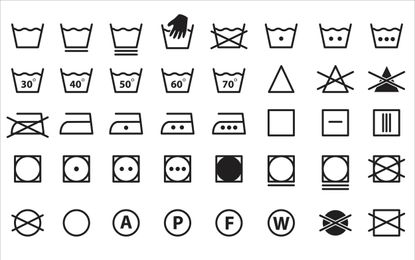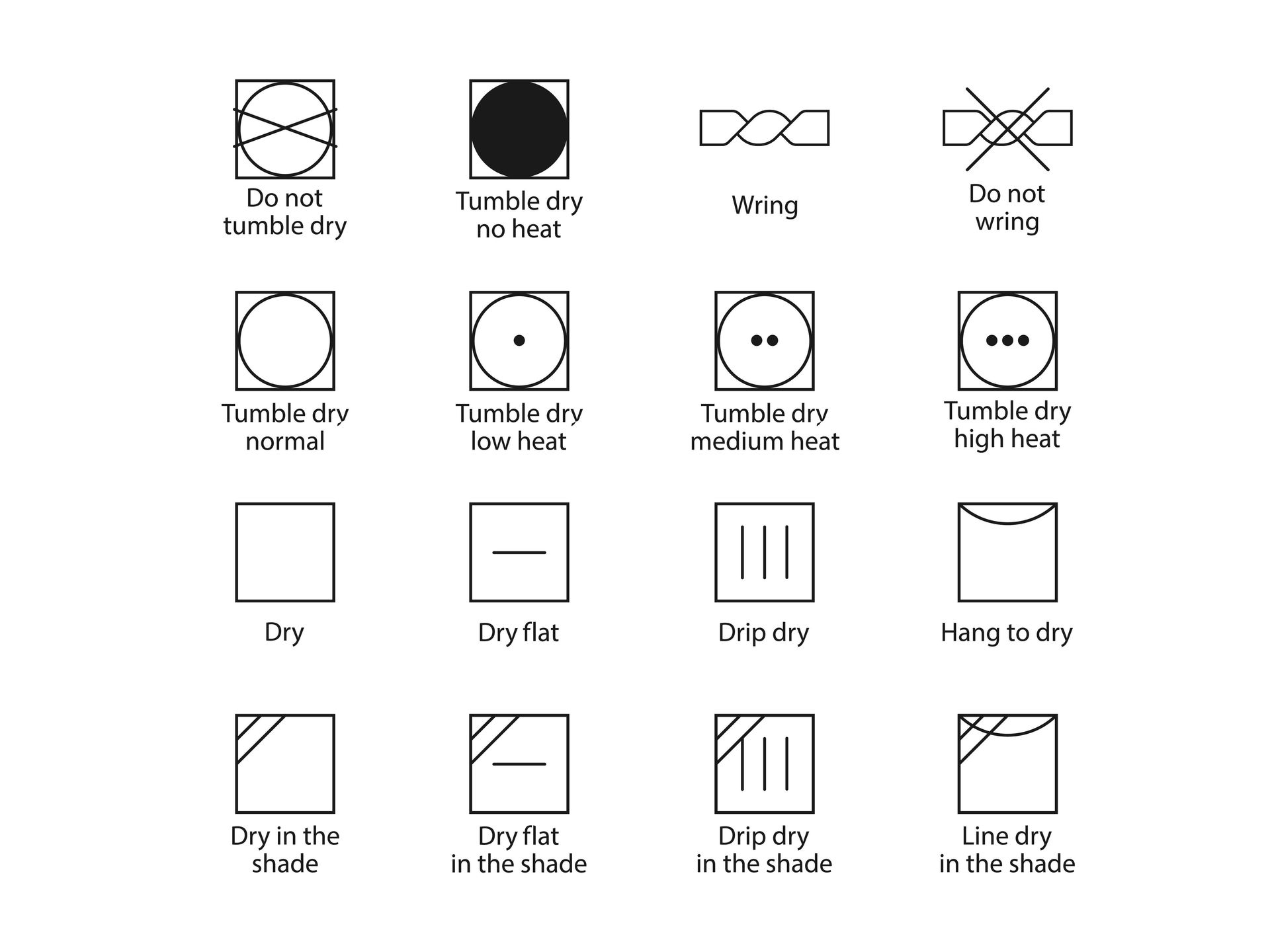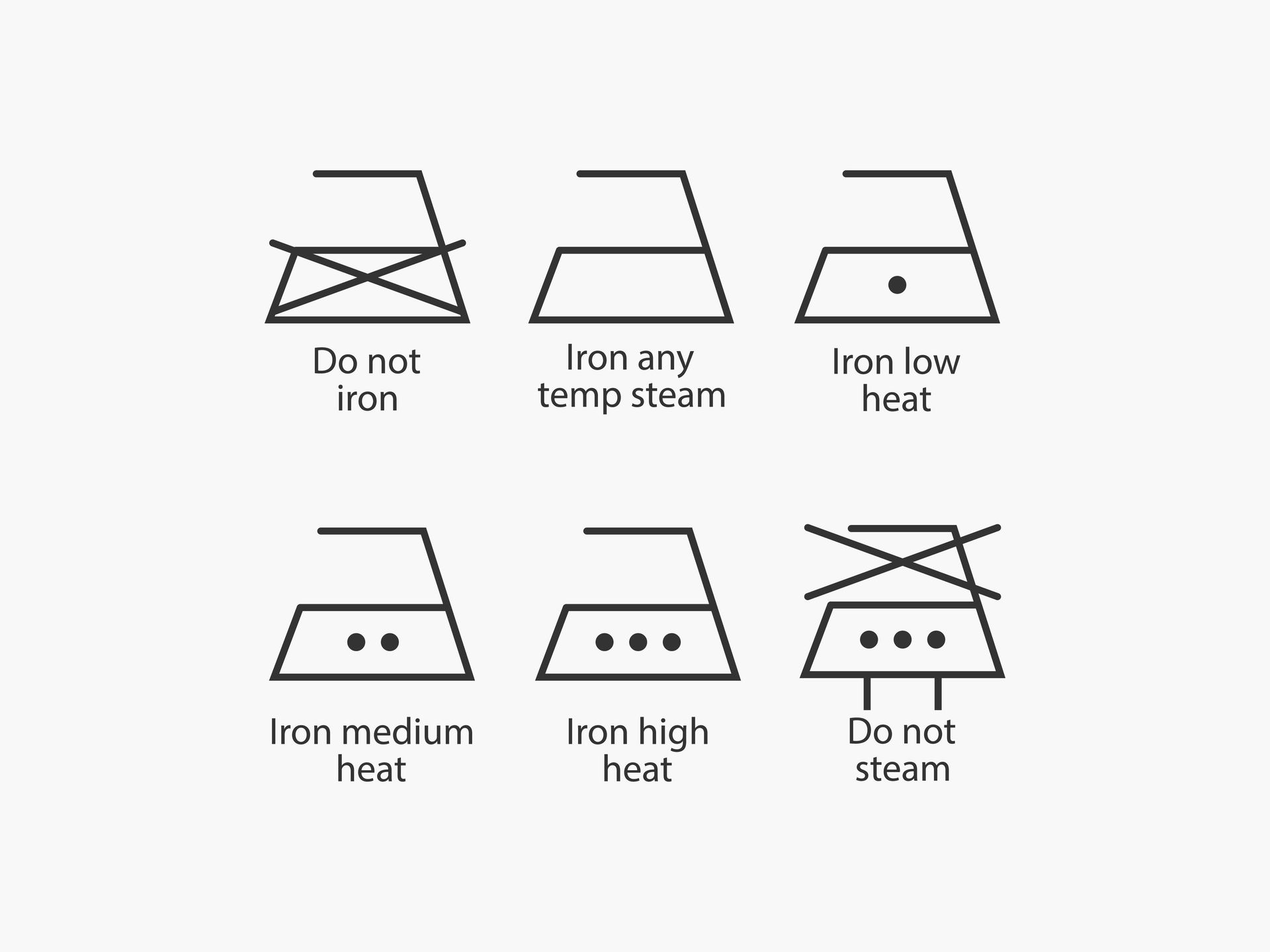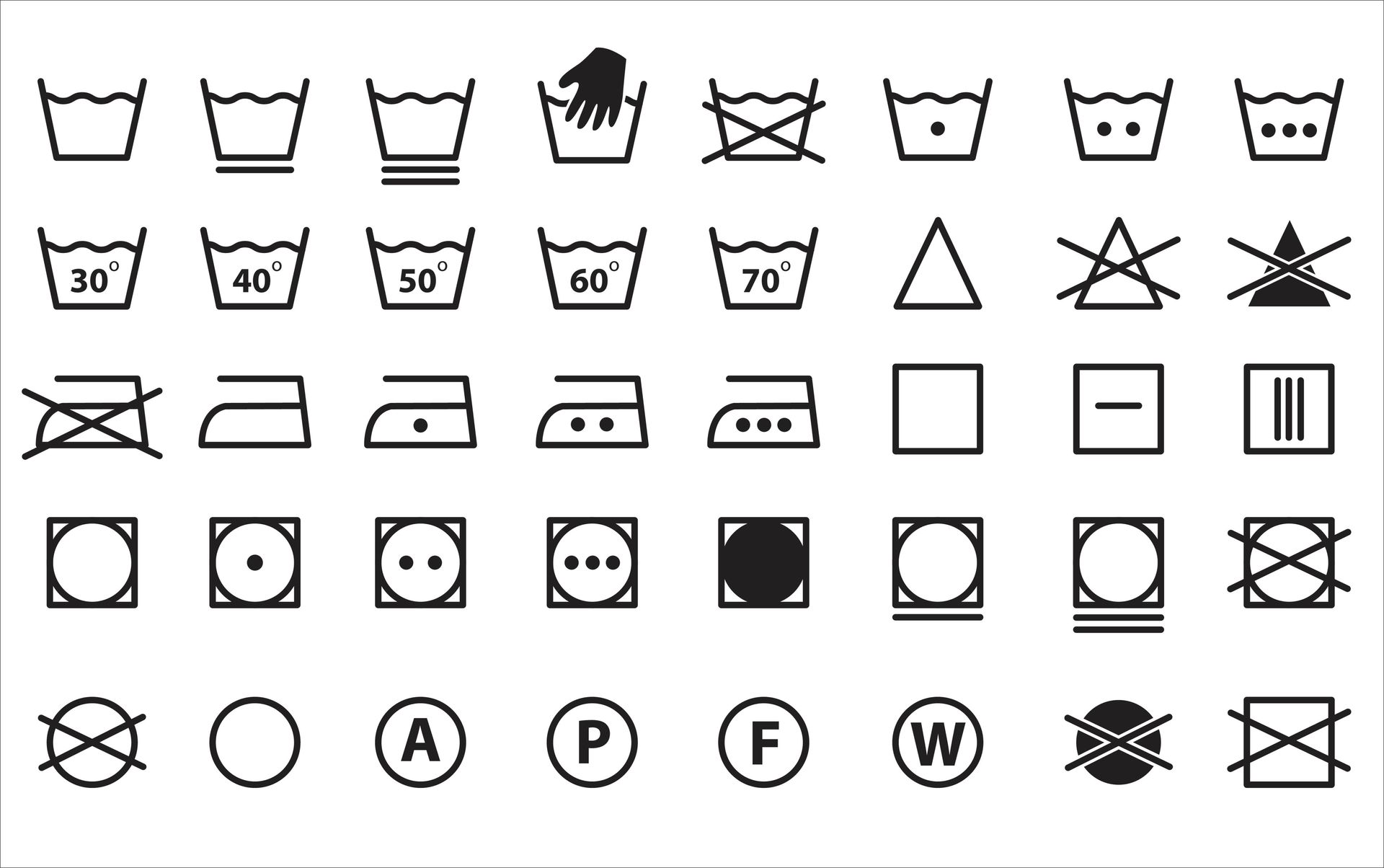Laundry symbols – how to care for clothes and linens
Keep items in best condition when washing, drying and ironing by getting savvy about laundry symbols
- (opens in new tab)
- (opens in new tab)
- (opens in new tab)
- Sign up to our newsletter Newsletter


Laundry symbols are the key to the appropriate care of clothes, bed, bath and table linens and more around the home. But to avoid problems like shrinkage and color runs, it’s vital to be aware of what each of them means.
The symbols don’t just apply to doing laundry with a home appliance. They also apply to bleaching, if you need to carry this out, along with drying, and ironing, so every stage of the laundry process can be carried out with optimum fabric care in mind.
Great laundry room ideas will give you a stylish as well as functional space, and to be sure of looking after garments and linens correctly use our guide, along with the advice of the experts.
Laundry symbols: a guide
It’s always worth checking the manufacturer’s label for instructions when washing items (as well as regularly cleaning a washing machine) to give them the longest possible lifespan, as individual pieces may need care that differs from what you might assume. Understanding laundry symbols will also help you wash towels the right way, and keep towels fluffy, plus answer the question can you wash couch cushion covers.
‘Typically, the biggest risk to garments when the care label isn’t followed is to that garment and potentially others in the same load,’ says Jonathon Reckles, VP at CD One Price Cleaners (opens in new tab). ‘Common results would include distortion, shrinkage, and color loss. Color loss can cause bleeding on to other garments, such as the classic white load and red sock causing everything to be pink.’ The answer to the question of whether to wash whites in hot or cold water is also influenced by the care label.
Here’s what the laundry symbols indicate.
Washing symbols

The laundry symbols for washing cover whether an item can be washed in a machine; the temperature; and the cycle. Look out for them on clothes, but they’ll also give you the answer to questions such as can you wash pillows in a washing machine, and whether you can wash an electric blanket, or wash a down comforter.
Washing symbols
A tub icon with a wavy line means an item can be machine washed.
A tub icon with a hand indicates an item should be hand washed.
A tub icon with cross through it means do not wash.
A circle indicates dry clean only.
A circle with a cross through it means do not dry clean.
Washing temperature symbols
The machine wash temperature symbols are identified by dots:
A single dot inside, this indicates an item should be washed cold at 85ºF (30ºC).
Two dots indicate a warm wash temperature of 105ºF (40ºC).
Three dots show a warm/hot wash of 120ºF (50ºC).
Four dots mean a hot 140ºF (60ºC) wash.
Five dots indicate a sanitizing 160ºF (70ºC) wash.
Washing machine cycles
If the label shows just the tub icon with the wavy line, use a normal cycle for the item in question.
If the tub icon has a horizontal line below, use the permanent press cycle.
Two horizontal lines below the tub with a wavy line icon? Use a delicate or gentle cycle.
Drying symbols

Even a small laundry room can provide space to dry as well as wash, but if you’re intending to put washing into the dryer rather than on the line, you need to know what the laundry symbols mean, including that for the delicate setting on a dryer.
Drying symbols
A square with a circle within it shows an item can be tumble dried.
If there’s a single line under this symbol, this indicates permanent press.
Two lines below means delicate or gentle.
A square with a circle within it with a cross over it means do not tumble dry.
A square with a curved line within it at the top which goes from one side to the other indicates an item should be line dried or hung to dry.
A square with three vertical lines inside shows you should drip dry.
A square with a single horizontal line inside indicates dry flat.
Drying temperature symbols
A tumble dry symbol with the circle filled in shows no heat should be used.
If the tumble dry symbol has one dot in the center, this indicates a low heat setting (explained in the tumble dryer temperature guide) should be used.
Two dots mean medium heat.
Three dots and you can use a high temperature.
Bleaching symbols

If you want to use bleach in laundry, check for the bleach laundry symbols beforehand.
Bleaching symbols
A triangle shows you can use bleach.
A triangle with two angled lines inside indicates non-chlorine bleach should be used.
A cross over the triangle? Do not bleach
Ironing symbols

It’s vital to get the heat right when it comes to ironing as well as for washing and drying. Look out for these laundry symbols.
Ironing symbols
An iron icon shows an item can be ironed.
If there’s a single dot inside, use low heat.
Two dots mean medium heat.
Three dots and high heat is allowed.
If the iron icon has two sloped vertical lines below that are crossed through, avoid the use of steam.
An iron with a cross over it indicates do not iron.
What does a circle with a cross mean on clothes?

A circle with a cross on clothes shows that the item should not be dry cleaned.
Conversely, if an item can be dry cleaned, there’s a circle icon.
A circle – dry clean – symbol may have a letter of the alphabet within it. ‘Commonly misunderstood icons are typically relating to dry clean only garments,’ says Jonathon Reckles. ‘These tend to have information about which solvents are best for that garment, which can be slightly confusing because they’re letters versus laundry-looking icons.’
What is the no washing machine symbol?

The no washing machine symbol is actually the no wash symbol, in other words the tub with a wavy line with a cross over it. You might come across it if you’re planning to wash stuffed animals (but if you’ve got a young family, bear in mind that cleaning bath toys should be done in the dishwasher or by hand), as well as when you’re laundering clothes and linens.
‘If the garment or other piece can be hand washed but just not put in the machine, it will have the tub plus hand icon that shows hand washing is possible,’ explains Lucy Searle, editor in chief of Homes & Gardens.
Not sure what you should do with a particular item? ‘When in doubt a good professional cleaner can help you determine the best way to clean, including dry cleaning alternatives like wet cleaning for more difficult and less common fabrics,’ says Jonathon Reckles.

Sarah is a freelance journalist and editor. Previously executive editor of Ideal Home, she’s specialized in interiors, property and gardens for over 20 years, and covers interior design, house design, gardens, and cleaning and organizing a home for H&G. She’s written for websites, including Houzz, Channel 4’s flagship website, 4Homes, and Future’s T3; national newspapers, including The Guardian; and magazines including Future’s Country Homes & Interiors, Homebuilding & Renovating, Period Living, and Style at Home, as well as House Beautiful, Good Homes, Grand Designs, Homes & Antiques, LandLove and The English Home among others. It’s no big surprise that she likes to put what she writes about into practice, and is a serial house renovator.
-
-
 Valentine's Day gift ideas 2023: 24 last-minute luxuries for your loved ones
Valentine's Day gift ideas 2023: 24 last-minute luxuries for your loved onesFrom the timeless beauty of a traditional bouquet of flowers to unique houseplants and fun sweet treats, our selection of Valentine's Day gift ideas will be sure to inspire
By Zara Stacey • Published
-
 Robert Pattinson just bought a Spanish Colonial-style home – with an interior designer past
Robert Pattinson just bought a Spanish Colonial-style home – with an interior designer past'The Batman's' Robert Pattinson and Suki Waterhouse purchased the Jeff Lewis-designed Hollywood Hills estate for $5.3 million
By Megan Slack • Published

